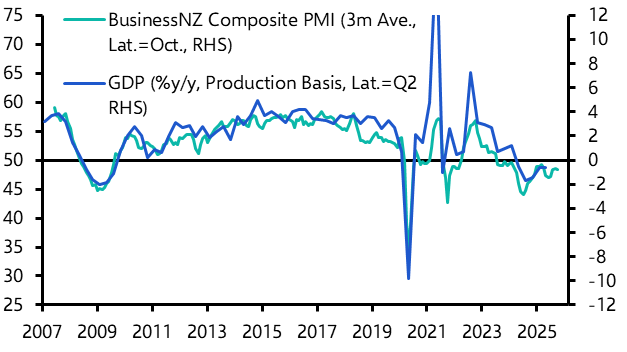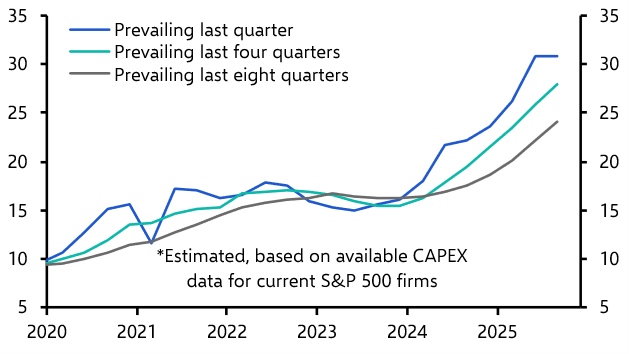So far at least, that’s what we’ve seen. CMBS spreads have blown out, with option-adjusted spreads on triple-B CMBS rising from just over 300 basis points in early 2022 to more than 900 bps last week. Simultaneously, anecdotal evidence suggests lenders stepped back from originating new loans, especially on office assets, including on deals already in the pipeline.
The longer this retrenchment continues, the greater the risk posed to property values, given the majority of investors use leverage to enhance returns. Wider margins, or even a total absence of debt, makes many deals unviable, denting demand and therefore, activity and prices.
Worse, data from RCA show there is $900 billion of debt due for refinance in 2023-2024. Those borrowers will face a hike in interest rates; some may struggle to refinance. Furthermore, with commercial real estate values correcting – we expect a peak-to-trough fall at the all-property level of 22 percent and a more than 30 percent drop in office values – some investors face having to inject additional equity to appease lenders and avoid breaching debt covenants.
This points to a tough time ahead for many investors, particularly those with high office exposure. Indeed, signs of distress amongst office CMBS are growing. The delinquency rate on office CMBS has ticked up, reaching 2.61 percent in March, according to Trepp, with nearly double in special servicing. Both figures are set to worsen in coming months as investors give up the ghost on unviable assets, handing keys back to lenders.
So far, so much the victim. But, as is often the case when stresses appear in the financial system, there are ways in which commercial real estate may not just be the victim, but also the villain.
After all, we know that small US banks hold 70 percent of assets as commercial real estate loans. This means their exposure to the sector on a bank-by-bank basis is far larger than that of the big banks. In fact, these banks, which account for less than one-third of all bank deposits in the US actually hold more than two-thirds of outstanding commercial real estate loans. Thanks to that apparent imbalance, I see two main ways in which commercial real estate could pose existential risks to these banks.
First, deposit flight could highlight the mismatch between the liquidity of these banks’ deposits and assets. Already, small bank deposits had fallen by nearly 4.5 percent or $246 billion, in the four-week period from 6 March to 3 April. Some of that reflects depositors withdrawing uninsured cash in the wake of the recent failures, moving it to bigger banks. But the larger banks have also seen net outflows of deposits in that period. So, while this flight remains a risk, especially for small banks, there is another factor at play.
That is money market funds. Some are offering rates of 4.5 percent or more, attracting deposits away from banks. With interest rates elevated, this is likely to continue, meaning banks’ deposit bases shrink and, at the least, impacting on their ability to originate new loans, but potentially also
causing them to pull back on refinancing existing loans. This could impact the finance available for real estate lending and, at the extreme, bring more product to market, thereby causing further deterioration in values.
The second way real estate could bring about bank failures is through specific banks’ exposure to the worst-hit assets. In a recent research note for our clients, I highlighted the poor outlook for the office sector, and in particular, the major US gateway markets like Chicago, LA, New York, San Francisco, Washington DC, and the next tier of western cities, with Seattle most vulnerable.
We see San Francisco office values dropping up to 50 percent on average, compounded by being the worst-performing apartment market too. Given the concentrated nature of regional banks’ real estate lending, the worst-hit markets could have a substantial impact on banks’ balance sheets over the next few years as assets stop producing income and are returned.
These two risks, therefore, highlight commercial real estate’s importance to the regional banks and why the sector may not only be impacted by the banking problems, but could ultimately pose a risk to the system.
A version of this article was originally published on PERE on 17th April, 2023





